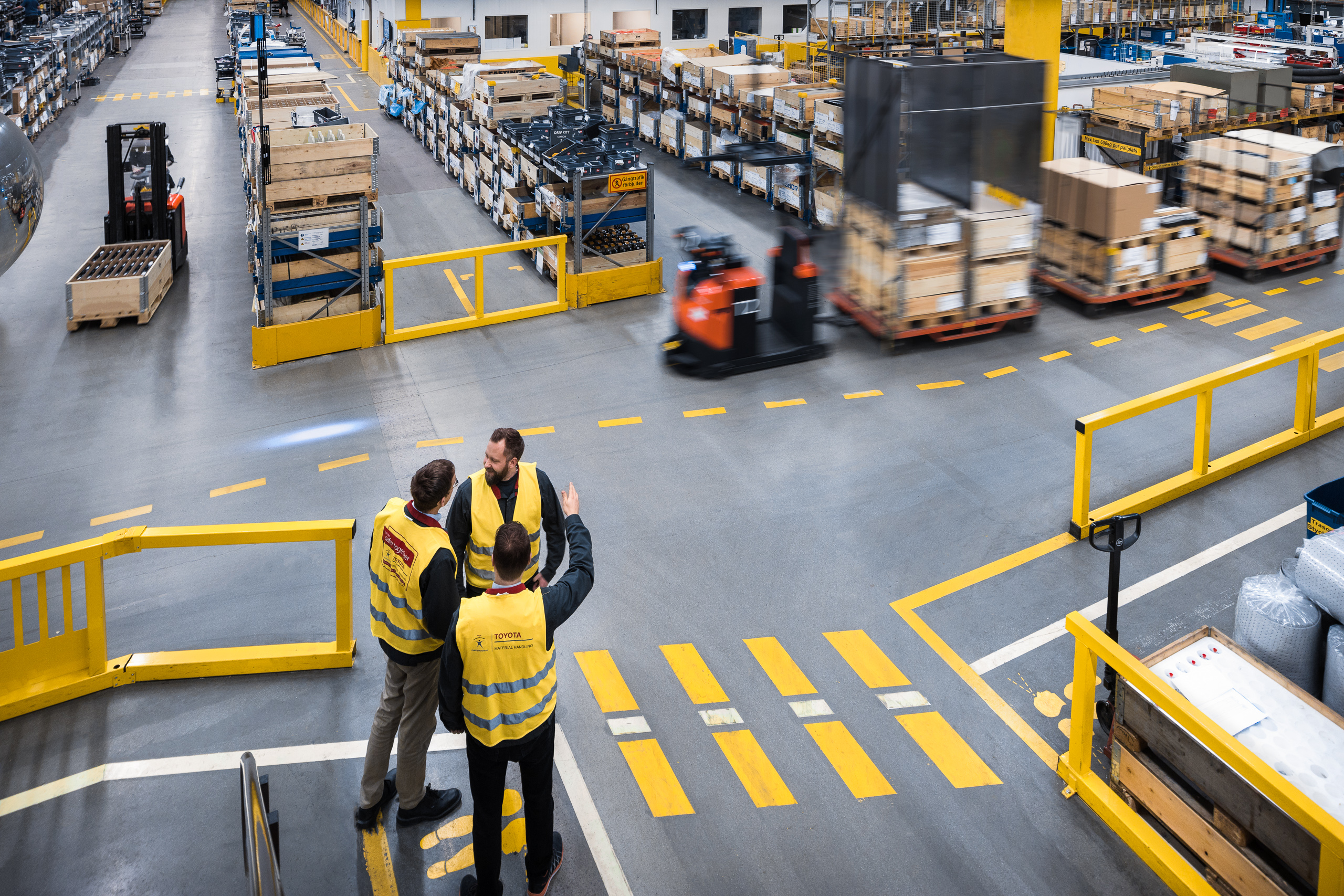Every delay, extra step, or inefficient move adds hidden costs. In material handling, these inefficiencies consume time and money without adding value. At Toyota, we call this Muda – the Japanese term for waste, derived from lean manufacturing meaning any activity that consumes resources but creates no value. That’s why we embrace Zero Muda (zero waste) the drive to reduce waste and maximise efficiency through smarter, safer, and more sustainable ways of working.
Our focus is on reducing Muda in our own operations and working with our customers to achieve similar goals, in this blog we highlight some common inefficiencies in material handling and the steps you can take to help fix them.
1. Excessive Manual Handling
The manual handling of goods slows down processes and is one of the leading causes of workplace injuries. The manual movement of items is inefficient because it is slower, more labour intensive and limited by human strength. Workers can only carry small loads at a time, require breaks, and are prone to fatigue, which limits consistency and increases the likelihood of errors. It also raises the risk of injuries such as strains and sprains, leading to absences and reduced productivity.
What steps can you take to help fix this?
- Utilising equipment such as hand pallet trucks or forklift trucks to move goods more quickly and safely.
- Introducing proper operator training to ensure operators are up to date with the required skills needed to operate equipment.
2. Waiting and Downtime
Waiting and downtime occur when trucks, operators, or goods stand idle instead of keeping materials moving, wasting valuable time and slowing down operations. This is often the result of poor planning, inefficient scheduling, bottlenecks in high-traffic areas, or unexpected equipment breakdowns.
What steps can you take to help fix this?
- Utilising fleet management and warehouse planning tools to optimise workflows and ensure resources are available where and when they’re needed.
- Ensuring you have a regular forklift service & maintenance plan to avoid unexpected breakdowns.
- Exploring Automation solutions, such as Automated Guided Vehicles (AGVs) ensures goods keep moving without delays.
3. Inefficient Transport Routes
When trucks and operators travel long or poorly planned routes, it adds unnecessary time to tasks and increases energy use. Inefficient routes often stem from warehouse layouts that haven’t been designed around current workflows, or from a lack of clear traffic management. Over time, these extra distances reduce productivity, put more strain on equipment, and lead to higher operating costs.
What steps can you take to help fix this?
- Re-designing warehouse layouts to match current workflows and reduce travel distances.
- Automation solutions, such as Automated Guided Vehicles (AGVs), can also be introduced to create smoother, more direct flows of goods and ensure consistent movement through the facility.
4. Poor Use of Space
Overcrowded storage and disorganised layouts not only slow down picking but also create safety risks for operators. When goods are stored inefficiently, more time is spent navigating around obstacles, which reduces productivity and increases the chance of accidents. A warehouse that isn’t optimised for its current volume and workflow also struggles to scale effectively, limiting growth and flexibility.
What steps can you take to help fix this?
- Maximise space by adopting racking systems that make better use of vertical storage and free up floor areas.
- Introducing equipment designed for narrow aisles or high racking ensure you make the most out of your warehouse footprint.
5. Maintenance and Breakdowns
When equipment isn’t properly maintained, it can quickly lead to costly downtime. Breakdowns not only interrupt operations but also create knock-on delays for operators and goods waiting to be moved. Poor maintenance increases the risk of accidents, as unreliable trucks put operators and the wider workforce in danger. Without a structured service plan or quick access to the right parts, repairs take longer and productivity suffers. Over time, poor maintenance shortens the lifespan of trucks, increasing replacement costs and reducing overall efficiency.
What steps can you take to help fix this?
- Ensuring you have a service and maintenance plan in place using genuine parts.
- Adopting fleet management technology also helps you to monitor your trucks, which will help keep your equipment running safely and reliably.
6. Data Gaps and Lack of Visibility
Without accurate, real-time information, and relying on guesswork, it’s difficult to identify problems or measure performance effectively. This lack of visibility can hide inefficiencies such as underused equipment, unbalanced workloads, and accidents.
What steps can you take to help fix this?
- Implement smart fleet and warehouse management technology to capture data, track usage, and identify areas for improvement.
7. Energy Waste
Using the wrong energy source to power your equipment can quickly drive-up running costs, create unnecessary emissions, and even cause unplanned downtime.
What steps can you take to help fix this?
- Match your energy solution to your operation. Consider factors such as shift patterns, charging infrastructure, and sustainability goals. Practices like opportunity charging, regular monitoring of energy use, and maintaining equipment correctly can all help reduce waste and extend uptime.
For more information on our Zero Muda approach and how we can support your operation, Click Here
